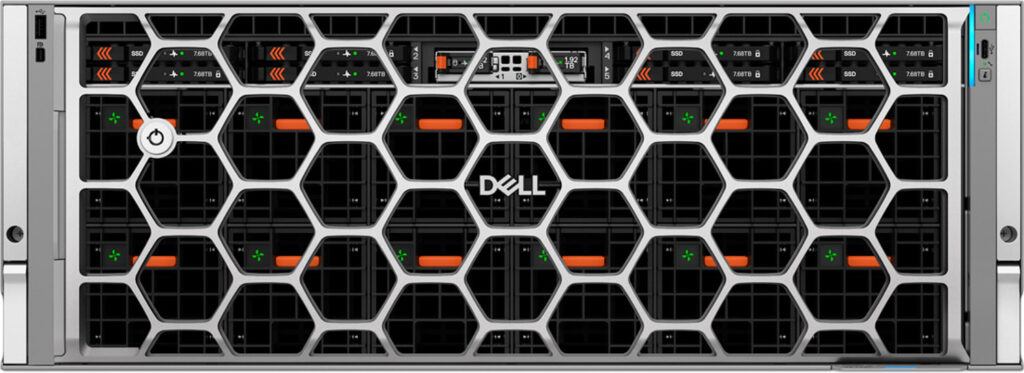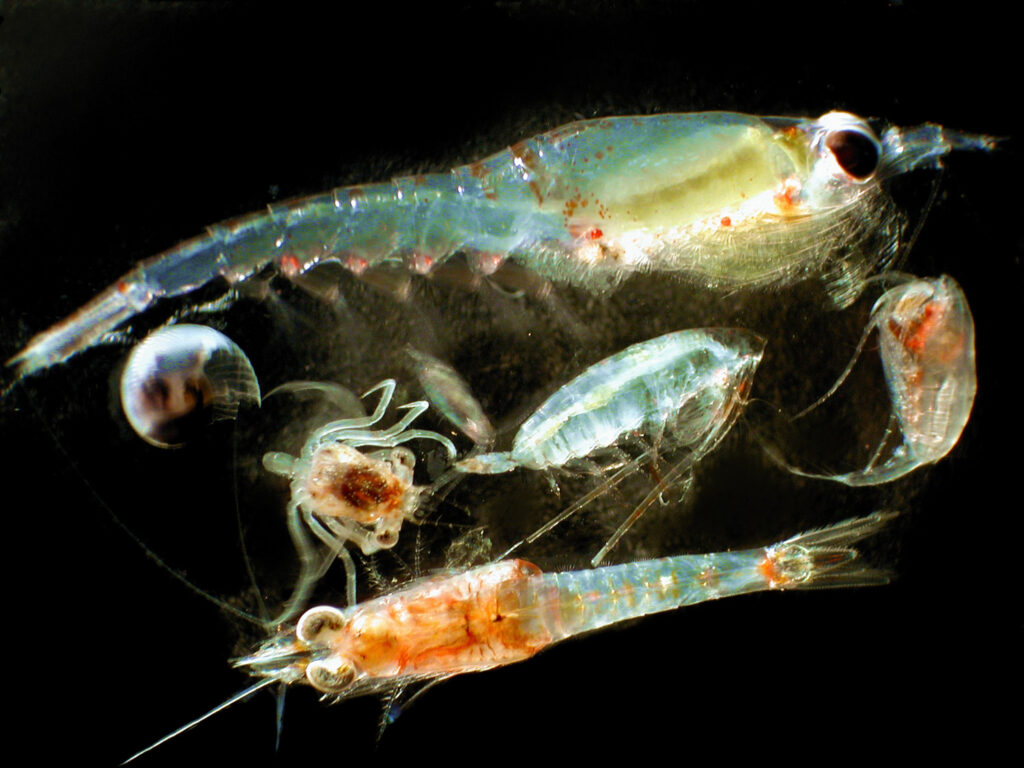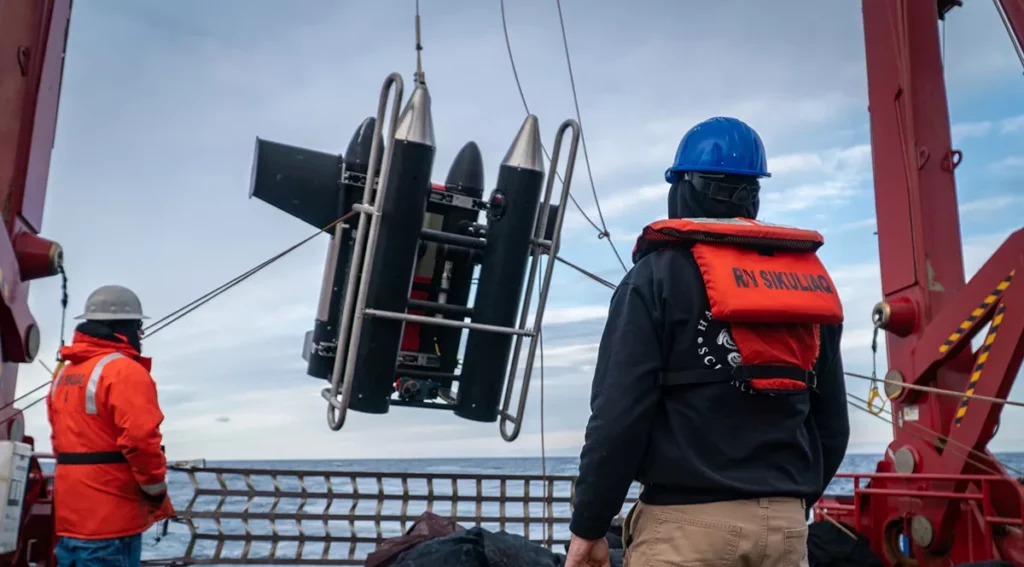“We care about technologies that change science.”
— Christopher Sullivan, Director – Research and Academic Computing – College of Earth, Ocean, and Atmospheric Sciences – Oregon State University
At Oregon State University’s Plankton Ecology Lab, located within the Hatfield Marine Science Center, the conversation about infrastructure begins with a scientific goal. How can technology help researchers understand our oceans better and faster while preserving every unique data point they collect at sea? The answer increasingly depends on compute, GPU acceleration, and dense NVMe storage, working in service of the science rather than the other way around.
The lab studies the foundation of the marine food web by capturing high-resolution imagery and environmental telemetry, then turning those streams into insights. That work is not abstract. It is field science that depends on ships, sensors, and time windows that cannot be recreated. Losing data is not an inconvenience. It is the loss of a moment in the ocean that will never return.

Answering massive scientific questions requires robust hardware. We’ve been sailing alongside OSU as they validate a Dell PowerEdge XE7745 that pairs GPUs with high-density NVMe SSDs, allowing researchers to analyze, preserve, and share data without compromise. The emphasis is on integrity and reliability first, followed by speed at scale. That is how technology changes the practice of science through AI rather than in theory.
Inside the System
- Server: Dell PowerEdge XE7745 (4U)
- Processors: Dual AMD EPYC 9555 64-Core
- DRAM: 24x32GB – 768GB
- GPUs: 4 × NVIDIA RTX Pro 6000 Server
- Storage: 8 × Solidigm D5-P5336 E3.S 30.72 TB
- Networking: 100 Gb Ethernet offload
“All technology already biases science. The challenge is to find technology that removes those limits.”
Plankton are the invisible architects of life on Earth. These microscopic organisms drive the planet’s biological engine, producing roughly half of the world’s oxygen and forming the foundation of every marine food web. They absorb massive amounts of carbon dioxide, influence global climate cycles, and serve as early indicators of ecosystem change. Understanding plankton means understanding the ocean’s health, its role in regulating the atmosphere, and ultimately, the planet’s future stability.

Zooplankton, Image Credit: Matt Wilson/Jay Clark, NOAA NMFS AFSC.
For decades, plankton research relied on nets that gathered bulk samples, which were then analyzed under a microscope. These methods produced only snapshots and often led to the assumption that predators and prey were constantly interacting in the same region of the water column. High-resolution imaging systems capable of moving vertically through the ocean revealed a different picture. Many plankton species and their predators occupy distinct layers separated by depth, temperature, and nutrient gradients. This structure was invisible before. Modern imaging enables researchers to observe not only the presence of species but also their distribution, interactions, and how these interactions evolve.

In Situ Ichthyoplankton Imaging System (ISIIS), Image Credit: Oregon State University
OSU has many tools for studying plankton, but its primary instrument is the In Situ Ichthyoplankton Imaging System (ISIIS). ISIIS is a towed platform that travels through the ocean, sending back information over copper/fiber optic oceanographic wire. Twin 8K cameras capture silhouettes of plankton as seawater flows through the system, imaging up to 160 liters per second while logging temperature, salinity, and depth data for context.
This process generates terabytes of data every day. OSU’s scientists want to analyze it in near real-time so ship crews can adjust their sampling routes based on what they see beneath the surface.
The long-term vision is to enable AI models to automatically identify organisms and detect shifts in plankton populations that could foreshadow larger environmental changes. Capturing these patterns at scale requires both advanced imaging systems and the computational infrastructure capable of transforming visual chaos into quantifiable insights.
Today, Oregon State’s validation work takes place on land, where the Dell PowerEdge XE7745 system is processing the immense image sets gathered by the ISIIS platform. This environment enables researchers to refine their models, verify data integrity, and assess how the system performs under scientific workloads. The long-term goal is to move this capability offshore, embedding the same compute and storage architecture aboard research vessels so that data can be processed and analyzed while still at sea. That shift from lab-based validation to real-time ocean deployment is what will ultimately close the loop between data collection, analysis, and discovery.
“Our ideal workflow is that when the ship reaches port, the science is already done.”
The next phase of Oregon State University’s research infrastructure brings computing directly to the waves. The university’s new research vessel fleet, including upcoming Regional Class Research Vessels like the R/V Taani, is being designed as a platform for high-performance, semi-autonomous data collection and analysis. These ships will serve as mobile laboratories, carrying scientific instrumentation, sensor arrays, and now, GPU-driven compute systems capable of analyzing terabytes of data before ever returning to shore.

3D Ship Render Photo Credit: Oregon State University
Each voyage will host multiple concurrent experiments, from plankton imaging and digital fisheries monitoring to acoustic mapping and environmental modeling. The challenge at sea is not power, but density. Every rack unit aboard the vessel must deliver maximum performance with minimal complexity, given the limited IT support staff at sea. The validated configuration of Dell’s PowerEdge XE7745 with Solidigm’s E3.S SSDs and NVIDIA RTX Pro 6000 GPUs is being evaluated as a cornerstone of this ship-based data center strategy. By processing data in near real-time, OSU’s researchers can adjust sampling routes, detect anomalies, and make informed scientific decisions while still underway.

Segmented Plankton Imagery, Source: Oregon State University
This approach also enables the integration of artificial intelligence into the workflow. AI models trained on historical plankton imagery can classify organisms, identify environmental trends, and even predict where high concentrations of target species are likely to appear. That capability transforms a research expedition from a passive data-collection mission into an active, adaptive exploration effort. When combined with reliable, redundant NVMe storage and high-speed networking, the result is a resilient edge-compute environment purpose-built for discovery.
The vision is to make every OSU research vessel a self-contained, AI-enabled observatory. Data collected by the ship’s instruments will flow directly into onboard compute clusters, where it can be analyzed, archived, and offloaded over 100 Gb Ethernet connections when the ship returns to port. By the time the vessel docks, scientists will already have actionable insights, validated results, and the confidence that not a single byte of data was lost to the sea.
“When you’re capturing environmental data at sea, every hour costs thousands of dollars.”
The data collected aboard Oregon State University’s research vessels is among the most valuable information in the scientific community. Each minute of operation represents ship time, fuel, crew, and equipment working in concert to capture conditions that may never occur again. Losing even a fraction of that data is not an option. Sullivan’s team designed their infrastructure around one principle: every bit must be preserved, verified, and analyzed before the ship ever ties back to the dock.

To meet that goal, OSU is validating the Dell PowerEdge XE7745, a 4U air-cooled platform built for GPU-accelerated workloads. This system pairs dual AMD EPYC processors with up to eight (four in this case) NVIDIA RTX Pro 6000 Server GPUs based on the Blackwell architecture. Each GPU offers 96 GB of high-speed GDDR7 memory and advanced tensor cores, specifically designed for AI inference and image processing, enabling researchers to analyze high-resolution environmental data in real-time.
The XE7745’s limited drive bays made capacity per slot a defining factor, leading OSU to integrate eight 30.72TB Solidigm D5-P5336 E3.S SSDs. This offers nearly 250 TB of flash storage in a compact footprint, combining Solidigm’s QLC NAND efficiency with enterprise firmware optimized for sustained write performance and data integrity. For the R/V Taani, where space and cooling are precious, this density allows the entire platform, compute, GPU acceleration, and redundant storage to fit into a single 4U chassis.
“We’re turning the nuts and bolts on these systems to see how far they can go.”
The validation phase at Oregon State focuses on understanding how well the Dell PowerEdge XE7745 supports the full plankton imaging workflow from end to end. The goal is not just to measure speed, but to confirm that the system can reliably process data at the scale and pace required during ship operations.
Today, the lab captures more than 15 terabytes of imagery and environmental data per day during a typical research deployment. With the XE7745 platform, the team is currently processing around two terabytes of raw video per day. This workflow uses 256 CPU cores for segmentation and four NVIDIA RTX Pro 6000 Server GPUs for inference. The resulting pipeline is roughly three times faster than the previous generation workflow.
The most notable finding is that the current bottleneck is CPU segmentation, not storage throughput or GPU processing. The Solidigm D5-P5336 SSDs in RAID 10 consistently deliver sustained read and write performance without falling behind the processing pipeline. The GPUs also maintain throughput headroom, allowing scale-out options as power and cooling resources permit. In other words, the hardware is no longer the limiting factor. The architecture now exposes the actual scientific workload, allowing the team to tune the segmentation stage with precision.

30.72TB Solidigm P5336 SSDs
The operational impact is significant. In previous expeditions, researchers could only watch the video stream as it was collected, unable to confirm whether they were sampling plankton-rich water or simply capturing suspended particulate matter. Plankton follow currents and often concentrate in subtle layers that are not visible in real time. Without processing, a ten-day voyage could produce hours of data with little usable scientific value.
With semi-real-time processing on the XE7745, the science team can now evaluate data quality during data collection. If the images show sparse plankton, the ship can change depth or move to new coordinates while still at sea. This ability to make informed adjustments is one of the core reasons AI-accelerated computing has a place on research vessels. It shifts the expedition from passive data capture to active scientific exploration.
As additional XE7745 systems are added, processing capacity can scale to handle the entire daily data volume. That scale is balanced against the physical realities of shipboard research: energy use, heat extraction, and rack density. Those challenges are not technological but environmental, and they are now visible precisely because the compute platform has proven capable of keeping up.
“If your technology can change science, let’s talk.”
Scientific understanding advances when we gain the ability to see what was previously hidden, and the oceans are full of such secrets. The imaging workflows at Oregon State University are now revealing rare plankton species that play critical roles in the marine food web while also demonstrating how environmental changes, such as rising ocean temperatures, affect their survival. Plankton respond rapidly to stress, making them early indicators of larger shifts in ocean and climate systems. Studying them in detail is essential to understanding how the ocean sustains life and how that balance may be changing.
This progress depends on tools that evolve in response to scientific questions. Modern research requires the ability to collect, process, and interpret massive data sets in the environments where they are generated. Large-capacity NVMe storage and GPU acceleration now enable processing to move closer to the point of data capture rather than relying entirely on centralized data centers. For OSU, that means real-time or near-real-time analysis at the edge, where scientific decisions can influence the course of data collection itself.

Oregon State University Student Savana Stallsmith Uses the Plankton AI Pipeline
The collaboration between Oregon State University and its technology partners reflects a shared understanding of the goals and objectives. The limits of research are not in the questions being asked; rather, they lie in the answers being provided. The limits are the practical ability to work through the volume of information the ocean provides. When compute, storage, and workflow design align with scientific needs, the constraints begin to fall away.
Looking ahead, the opportunity lies in designing systems that capture, analyze, and understand data without requiring it to be transferred across multiple platforms. Processing moves in the direction of the data, not the other way around. Shipboard computing clusters, dense NVMe storage, and GPU-accelerated inference are steps toward that model. This is not “aspirational AI.” This project demonstrates that a significant shift is already underway in research computing.
The ocean is changing. The data matters. The window to understand it is finite. The work at Oregon State shows what becomes possible when we bring the right technology to the right questions, at the right moment, in the places where the science is happening.
Learn more about Oregon State University’s research at SC25:
Dell Technologies Talk
Date: Tuesday 11/18
Time: 11:30 am
Location: Main Dell Booth Talk Area
Supermicro Talk
Date: Wednesday 11/19
Time: 5:00 pm
Location: Main Supermicro Booth #3504




 Amazon
Amazon